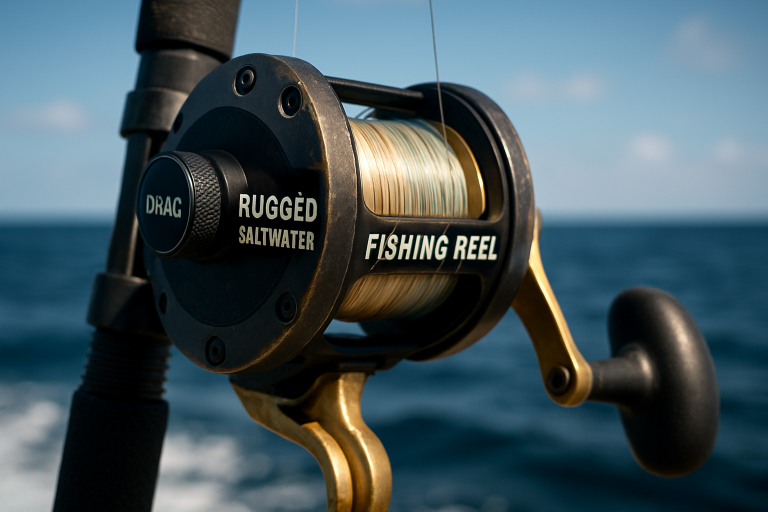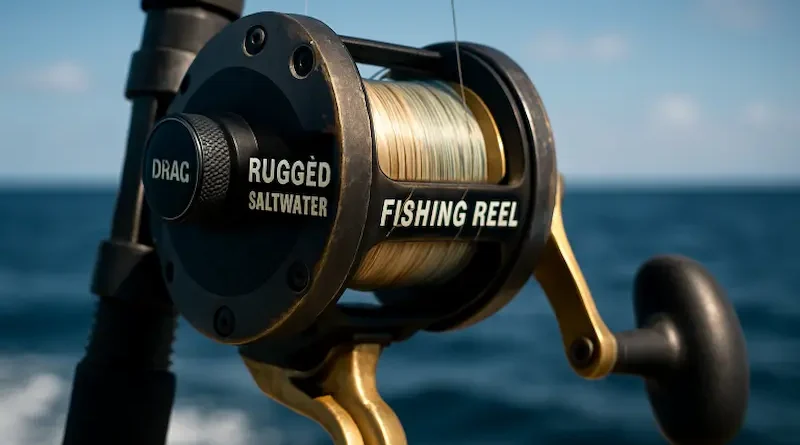Saltwater Fishing Reels: Top Tips for Every Angler
Saltwater fishing is an exhilarating pursuit that demands durability and the right gear. Whether you’re surfcasting from the shoreline or trolling offshore, choosing well-built equipment is central to your success. One of the most vital components in your setup is the fishing reel. Investing in high-quality saltwater fishing reels helps you withstand the challenges that ocean environments throw at your gear, from powerful fish to relentless salt spray.
When targeting big game or simply seeking an enjoyable day on the water, the right reel can be the difference between landing a trophy and losing it. Saltwater reels are engineered with advanced materials and robust engineering to deliver power, smoothness, and corrosion resistance, all essential attributes for any saltwater angler.
Saltwater environments are harsh and unforgiving, requiring equipment that won’t fail in critical moments. Beyond simply lasting longer, the best reels make every trip more enjoyable and productive, allowing you to focus on your technique and the thrill of the catch rather than worrying about equipment breakdown.
With numerous options available on the market, understanding the various types of saltwater fishing reels and what distinguishes them will help you make the most informed choice. Read on for an in-depth look at key features, top recommendations, and practical maintenance tips for keeping your gear in peak condition.

Understanding Saltwater Reels
Saltwater reels are specifically designed to meet the demands of marine fishing. Unlike freshwater models, they are designed for strength, longevity, and superior performance in tough environments. Top saltwater reels incorporate anti-corrosive materials, such as anodized aluminum and stainless steel internals, along with reinforced drag systems, to withstand repeated exposure to salt and sand.
There are several styles of reels commonly used for saltwater angling, including spinning reels, conventional (baitcasting) reels, and lever-drag reels. Your choice will depend on your preferred fishing style—spinning reels are popular for surf casting and inshore fishing due to their versatility and ease of use, while conventional and lever-drag reels are favored for trolling and targeting large offshore species.
Modern advances in sealing technologies, such as gaskets and O-rings, prevent salt and moisture from entering key areas, extending the shelf life of your reel and reducing maintenance needs. These innovations enable anglers to fish longer and harder, with fewer concerns about internal damage or mechanical failure.
Key Features to Consider
- Corrosion Resistance: The ocean’s high salt content accelerates rust and wear. Opt for reels made of anodized aluminum, titanium, or stainless steel, which resist corrosion and provide long-term durability.
- Sealed Bearings: Hidden grit or salt can quickly degrade a reel’s bearings. Sealed stainless steel bearings not only keep out corrosive elements but also maintain a reel’s smooth, reliable function.
- Drag System: Saltwater fish can be powerful adversaries. A robust drag system—ideally with carbon fiber drag washers—ensures consistent, strong pressure, reducing the risk of snapped lines and pulled hooks.
- Line Capacity: Oceanic fish are known for taking long, powerful runs. A spool with generous line capacity gives you the leverage needed to land big game, especially in deep water or heavy surf conditions.
- Gear Ratio: Fast-moving saltwater fish require quick line pickup. Higher gear ratios are ideal when you need to retrieve slack quickly or keep up with fast, energetic species.
Top Recommended Saltwater Reels
When it comes to tried-and-true options, a few standout reels are consistently recommended by experts and passionate anglers:
- Penn Spinfisher VI: Renowned for its rugged construction and IPX5 sealed system, this spinning reel excels at keeping water out while providing a buttery smooth drag. Anglers trust it for surf casting, pier fishing, and a variety of other applications.
- Shimano Saragosa SW: Designed for battling big game offshore, this reel is praised for its super-strong drag system and durable Hagane body. Offshore anglers consistently choose Shimano for its reliability and power in demanding conditions.
- Daiwa BG: A favorite among inshore enthusiasts, the Daiwa BG combines performance, value, and reliability, making it an ideal choice for a wide range of saltwater targets.
Maintenance and Care
Proper reel care boosts longevity and prevents unexpected failures. After every outing, follow these simple but crucial steps:
- Rinse with Freshwater: Always rinse your reel—never submerge—with a gentle spray of freshwater to remove salt deposits without forcing water into the gears or interior.
- Dry Thoroughly: Pat down with a soft towel and let air dry before storage. Excess moisture left inside can promote corrosion.
- Lubricate: Periodically oil bearings and moving parts with lubricants designed for fishing reels. This keeps everything running smoothly and guards against rust.
- Safe Storage: Store in a dry environment, preferably covered, to shield from dust and prolonged humidity. A reel cover or bag provides an additional layer of protection during transport or off-season storage.
Check periodically for built-up salt, sand, or wear, and address any issues early to prevent extensive damage. For more information on reel maintenance, check out this article from Outdoor Life. Regular upkeep not only extends the lifespan of your gear but also ensures smoother performance on the water. By staying consistent with maintenance, anglers can avoid costly repairs and enjoy more reliable fishing trips.
Common Mistakes to Avoid
- Using Freshwater Reels: Never use freshwater reels in the ocean, as they lack the corrosion resistance needed for saltwater environments and will have a dramatically reduced lifespan.
- Ignoring Maintenance: Regular cleaning and lubrication are vital. Skipping maintenance can lead to stubborn corrosion, sticky drags, and ultimately, reel failure.
- Poor Line Choice: Not all lines are suitable for all reels. Be sure your chosen line matches your reel’s capacity and intended species, or you could face snapping, tangling, or casting issues.
Conclusion
The right saltwater fishing reel transforms your time on the water, delivering both confidence and results. By focusing on corrosion resistance, quality construction, and diligent maintenance, you’ll ensure your gear is always ready for the next big catch. Remember, investing in a reliable reel is an investment in years of exciting, successful angling adventures. Whether you’re new to the sport or a seasoned pro, understanding your options and caring for your equipment will keep you hooked for years to come.
Visit the rest of the site for more interesting and useful articles.

